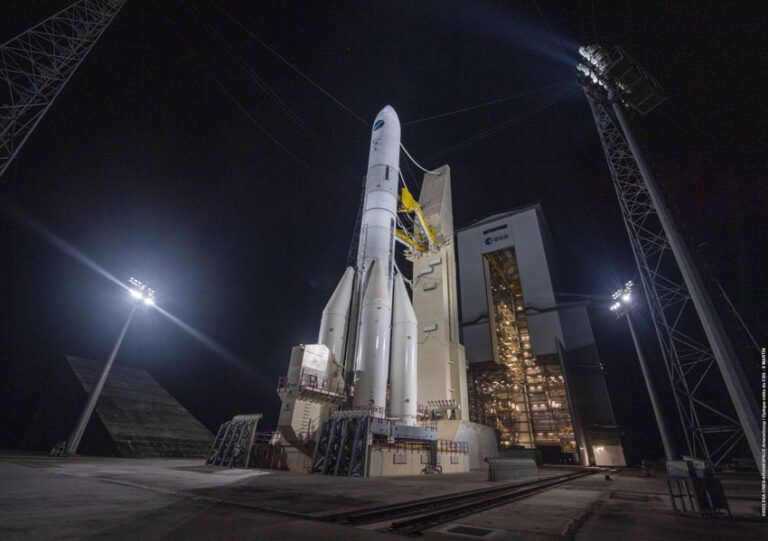Gases company Linde is working with Ariane to develop and test an additive manufacturing process for copper alloy parts that will be used in the combustion chambers of future heavy-lift rockets.
The latest additive manufacturing (AM) techniques mean that copper powder can be used for engine components with complex geometries such as cooling channels. Such parts were previously impossible to make using traditional manufacturing methods.
Linde has a bespoke gas mixture – ADDvance Laser230 and an oxygen control system, ADDvance O2 precision – which Ariane is to test as part of an AM process that is able to consistently deliver high quality printed copper components.
Copper is a superior heat conductor and a vital material in the aerospace industry, but is challenging to use in AM processes, because of its reflective properties.
Many AM processes use lasers to melt material, but copper acts like a mirror to lasers, reflecting a considerable amount of power, which then is not used to melt the metal. A higher laser intensity is required, but this can risk overheating the part and oxidation issues.
Pierre Forêt, associate director, additive manufacturing, Linde said, “Linde is very proud to be collaborating with Ariane on this project to improve the additive manufacturing process. Cooperating with world-leading partners like Ariane is at the core of our innovation culture.”
ADDvance Laser230, which is a blend of argon and helium can be used in laser powder bed fusion (LPBF) AM processes. It helps mitigate fumes and spatter formation and accelerate cycle times, making the printing process more reliable and lowering the cost per part. It is alloy-agnostic and suitable for making complex or lattice-type structures.
ADDvance O2 precision ensures that a maximum oxygen level as low as 10ppm remains in the print chamber. The low residual oxygen level ensures that overheating and oxidation is mitigated, enabling more efficient printing, without the need to wait for layers to cool down. It also means that non-oxidized powder can be reused, reducing material costs.
Mathias Palm, process specialist at European rocket group Ariane said, “To ensure the competitiveness of future launcher engines improved additive manufacturing processes are a key factor, enabling reduced manufacturing costs and improved lead times while maintaining the non-negotiable quality and reliability that has made Ariane an industry leader.
“We are confident that Linde’s gas expertise will contribute to optimizing the additive manufacturing process.”





